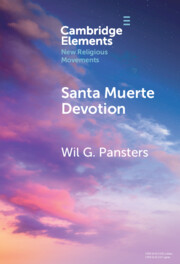313 results
2 - Automation, Surveillance, and the Administrative State
- from Part I - Automation and the Administrative State
-
- Book:
- Combatting the Code
- Published online:
- 26 March 2025
- Print publication:
- 03 April 2025, pp 19-34
-
- Chapter
- Export citation
21 - The Hollowed-Out American Nursing Home
- from Part V - Private Law Applied
-
-
- Book:
- Health Law as Private Law
- Published online:
- 16 March 2025
- Print publication:
- 27 March 2025, pp 270-282
-
- Chapter
-
- You have access
- Open access
- HTML
- Export citation
Mind the Gap: 3.11 and the Information Vulnerable
-
- Journal:
- Asia-Pacific Journal / Volume 12 / Issue 7 / February 2014
- Published online by Cambridge University Press:
- 14 March 2025, e4
-
- Article
- Export citation
Fiction from Unstable Ground: The Imagination of Disaster in the Aftermath of the Kantō Earthquake
-
- Journal:
- Asia-Pacific Journal / Volume 21 / Issue 8 / September 2023
- Published online by Cambridge University Press:
- 14 March 2025, e3
-
- Article
- Export citation

Santa Muerte Devotion
- Vulnerability, Protection, Intimacy
-
- Published online:
- 24 February 2025
- Print publication:
- 27 March 2025
-
- Element
- Export citation
A systematic review of assessing climate change risks on species and ecosystems: bibliometric overview, concepts, approaches, and trends
- Part of
-
- Journal:
- Global Sustainability / Volume 8 / 2025
- Published online by Cambridge University Press:
- 18 February 2025, e5
-
- Article
-
- You have access
- Open access
- HTML
- Export citation
Social Policy and the Determinants of Vulnerability – Missing ‘Race’ in Climate Adaptation
-
- Journal:
- Social Policy and Society , First View
- Published online by Cambridge University Press:
- 13 February 2025, pp. 1-12
-
- Article
- Export citation
Chapter 2 - Factors outside school
-
-
- Book:
- Student Engagement
- Published online:
- 22 December 2024
- Print publication:
- 16 January 2025, pp 30-52
-
- Chapter
- Export citation
Philosophy across boundaries
-
- Journal:
- Diogenes ,
- Published online by Cambridge University Press:
- 06 January 2025, pp. 1-4
-
- Article
-
- You have access
- Open access
- HTML
- Export citation

Embodiment, Dependence, and God
-
- Published online:
- 15 December 2024
- Print publication:
- 19 December 2024
-
- Element
- Export citation
How to Make Psychedelic-Assisted Therapy Safer
-
- Journal:
- Cambridge Quarterly of Healthcare Ethics , First View
- Published online by Cambridge University Press:
- 02 December 2024, pp. 1-15
-
- Article
-
- You have access
- Open access
- HTML
- Export citation
3 - Probabilistic Risk Assessment
- from Part I - Basics of CAT Modelling
-
- Book:
- Introduction to Catastrophe Risk Modelling
- Published online:
- 08 November 2024
- Print publication:
- 21 November 2024, pp 118-158
-
- Chapter
- Export citation
The Same Storm, but Different Boats: Unpicking the ‘Housing Crisis’
-
- Journal:
- Social Policy and Society , First View
- Published online by Cambridge University Press:
- 13 November 2024, pp. 1-11
-
- Article
-
- You have access
- Open access
- HTML
- Export citation
‘Social defence’ and the resilience of the domestic war on terror: A genealogy of social security, national security, and defence
-
- Journal:
- European Journal of International Security / Volume 10 / Issue 1 / February 2025
- Published online by Cambridge University Press:
- 13 November 2024, pp. 9-26
-
- Article
-
- You have access
- Open access
- HTML
- Export citation
Vulnerability and Critical Human Security in the Era of COVID-19 and Beyond in the UK and South Korea
-
- Journal:
- Social Policy and Society , First View
- Published online by Cambridge University Press:
- 08 October 2024, pp. 1-20
-
- Article
-
- You have access
- Open access
- HTML
- Export citation
Assessing the Intersectional Impact of Domestic Migration Law: Reacting to State-Created Categories and Vulnerabilities of Asylum Seekers in Israel
-
- Journal:
- Israel Law Review / Volume 57 / Issue 3 / November 2024
- Published online by Cambridge University Press:
- 04 October 2024, pp. 423-448
-
- Article
-
- You have access
- Open access
- HTML
- Export citation
10 - Conclusions
-
- Book:
- Centaurs and Snake-Kings
- Published online:
- 16 August 2024
- Print publication:
- 25 July 2024, pp 291-296
-
- Chapter
- Export citation
5 - Reflecting Ambiguity on the Cusp of Capacity
-
- Book:
- Values and Disorder in Mental Capacity Law
- Published online:
- 25 October 2024
- Print publication:
- 27 June 2024, pp 186-225
-
- Chapter
- Export citation
5 - Sierra Leone’s Truth Commission and Tribunal
-
- Book:
- Power, Patronage and International Norms
- Published online:
- 01 November 2024
- Print publication:
- 13 June 2024, pp 111-145
-
- Chapter
- Export citation
The Role of the Lawyer as Deal Maker in Health Care Acquisitions: From Amoral to Immoral?
-
- Journal:
- Journal of Law, Medicine & Ethics / Volume 52 / Issue 2 / Summer 2024
- Published online by Cambridge University Press:
- 22 October 2024, pp. 333-349
- Print publication:
- Summer 2024
-
- Article
-
- You have access
- HTML
- Export citation


